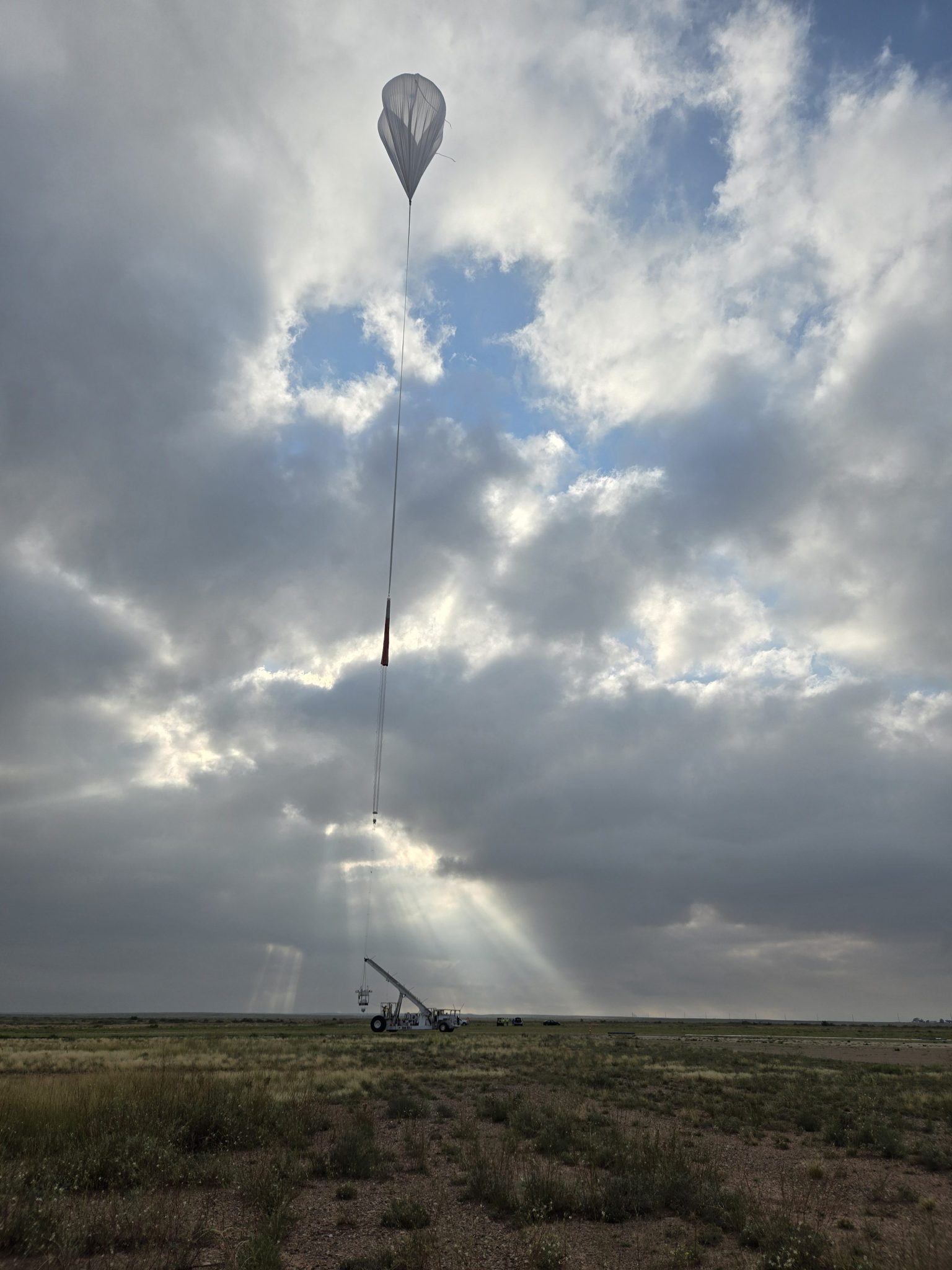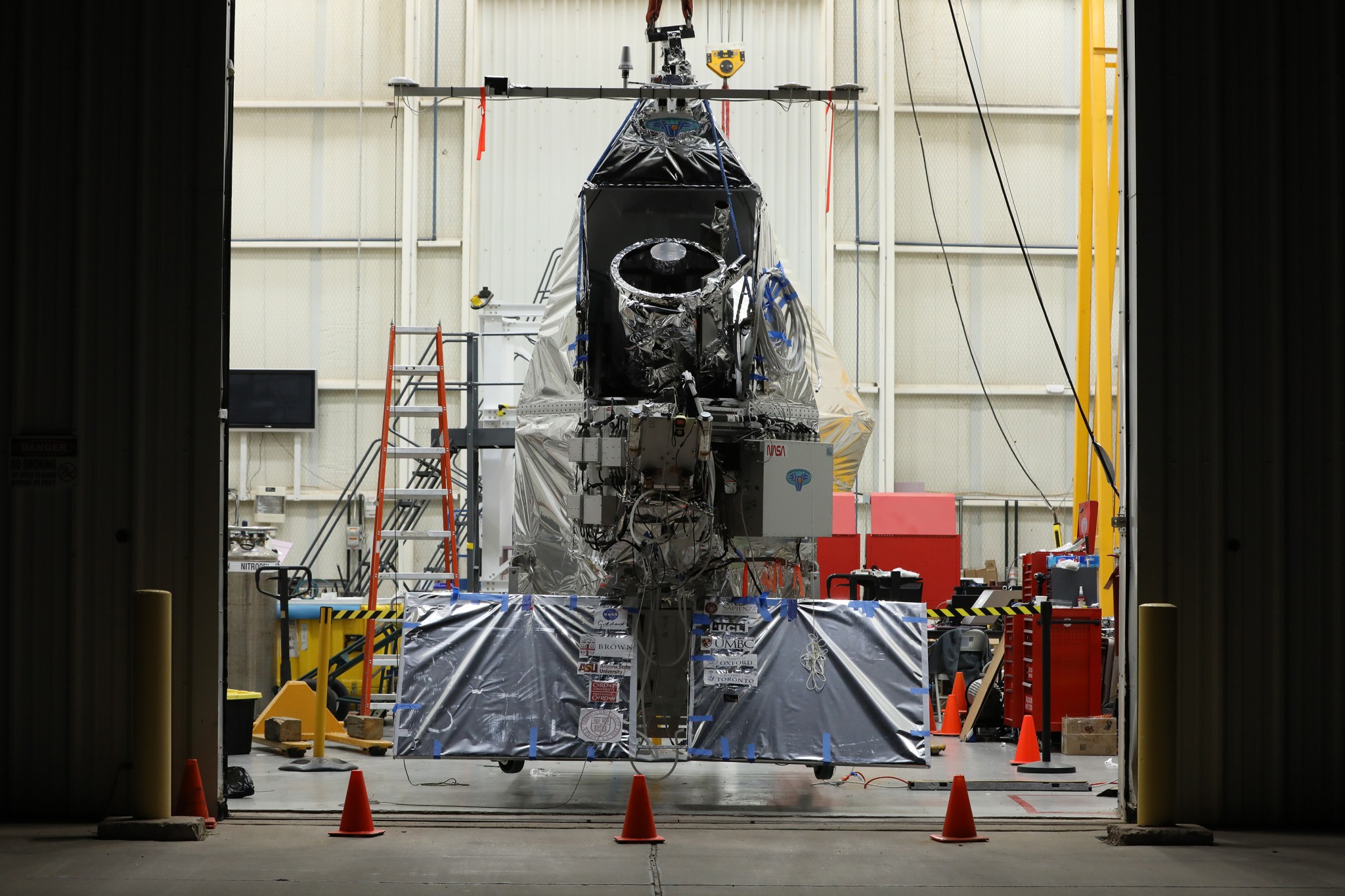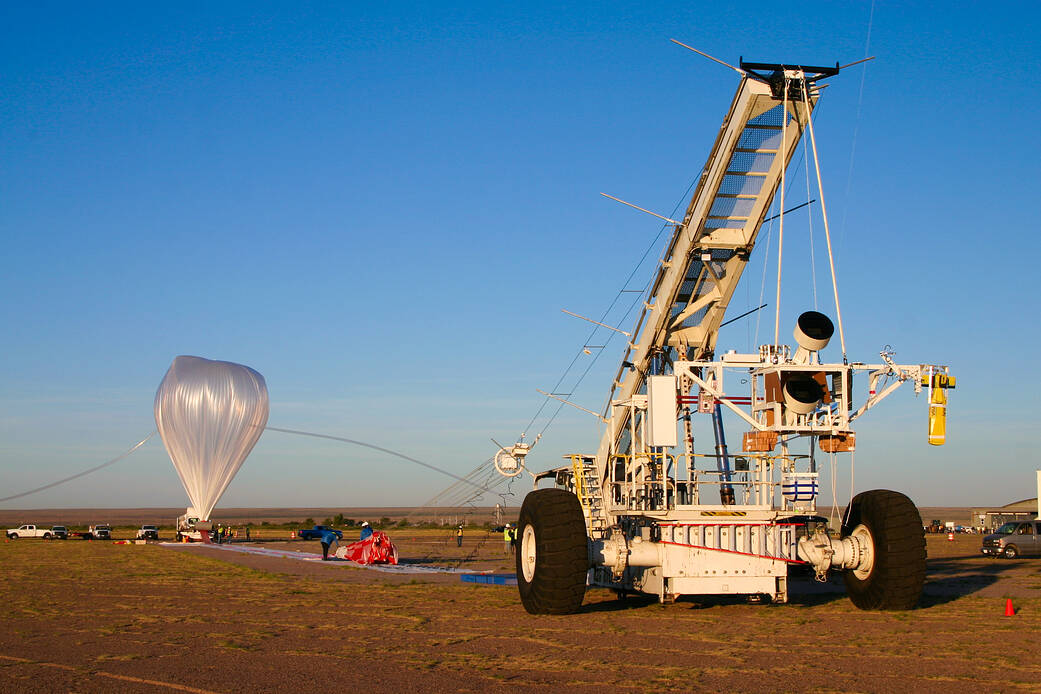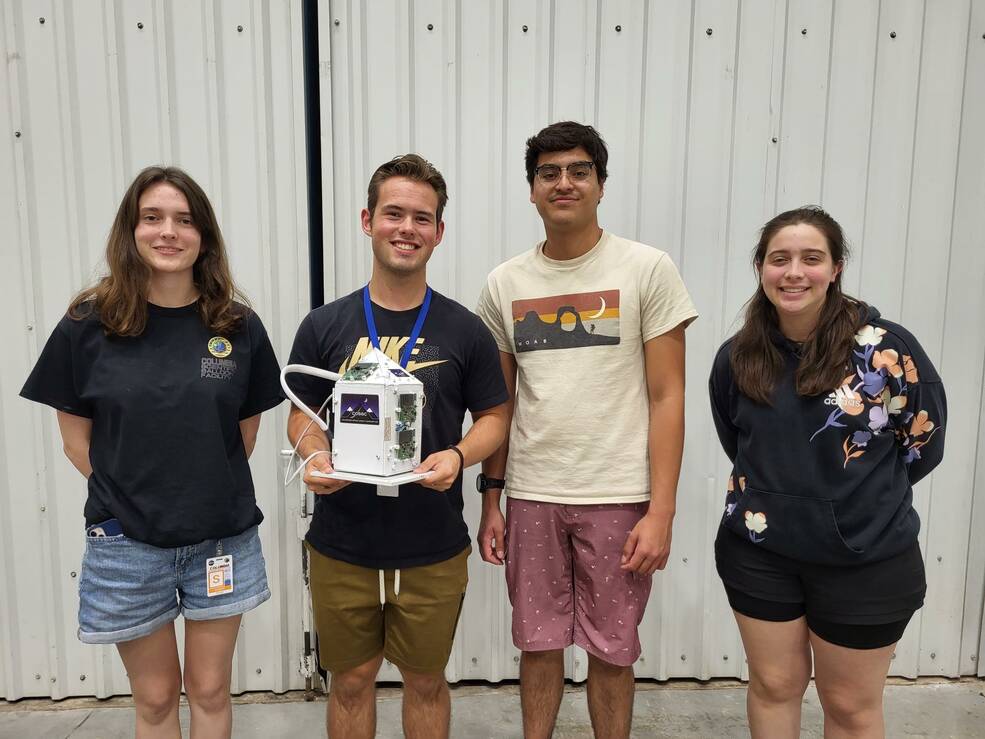5 min read Preparations for Next Moonwalk Simulations Underway (and Underwater) A super pressure balloon with the EUSO-2 payload is prepared for launch from Wānaka, New Zealand, during NASA’s campaign in 2023. NASA/Bill Rodman NASA’s Scientific Balloon Program has returned to Wānaka, New Zealand, for two scheduled flights to test and qualify the agency’s super pressure balloon technology. These stadium-sized, heavy-lift balloons will travel the Southern Hemisphere’s mid-latitudes for planned missions of 100 days or more. Launch operations are scheduled to begin in late March from Wānaka Airport, NASA’s dedicated…
Read MoreTag: Scientific Balloons
NASA Scientific Balloon Takes Flight With Student-Built Payloads
2 min read Preparations for Next Moonwalk Simulations Underway (and Underwater) The HASP 1.0 (High-Altitude Student Platform) scientific balloon mission launched Sept. 4, 2024, during NASA’s fall balloon campaign in Fort Sumner, N.M. NASA/Erin Reed NASA’s Scientific Balloon Program’s fifth balloon mission of the 2024 fall campaign took flight Wednesday, Sept. 4, 2024, from the agency’s Columbia Scientific Balloon Facility in Fort Sumner, New Mexico. The HASP 1.0 (High-Altitude Student Platform) mission remained in flight over 11 hours before it safely touched down. Recovery is underway. HASP is a partnership…
Read MoreNASA’s EXCITE Mission Prepared for Scientific Balloon Flight
5 min read NASA’s EXCITE Mission Prepared for Scientific Balloon Flight Scientists and engineers are ready to fly an infrared mission called EXCITE (EXoplanet Climate Infrared TElescope) to the edge of space. EXCITE is designed to study atmospheres around exoplanets, or worlds beyond our solar system, during circumpolar long-duration scientific balloon flights. But first, it must complete a test flight during NASA’s fall 2024 scientific ballooning campaign from Fort Sumner, New Mexico. “EXCITE can give us a three-dimensional picture of a planet’s atmosphere and temperature by collecting data the whole time the world orbits…
Read MoreNASA to Launch 8 Scientific Balloons From New Mexico
4 min read Preparations for Next Moonwalk Simulations Underway (and Underwater) A scientific balloon is inflated for the Salter Test Flight before being released during NASA’s 2023 fall balloon campaign. The test flight returns for the 2024 campaign in Fort Sumner, New Mexico, carrying several smaller payloads. NASA/Andrew Hynous NASA’s Scientific Balloon Program has kicked off its annual fall balloon campaign at the agency’s balloon launch facility in Fort Sumner, New Mexico. Eight balloon flights carrying scientific experiments and technology demonstrations are scheduled to launch from mid-August through mid-October. The…
Read MoreOn Cupid! On, Donner and BARREL!
NASA In this image from Dec. 8, 2017, four reindeer walk past the Balloon Array for Radiation-belt Relativistic Electron Losses, or BARREL, payload on the launch pad at Esrange Space Center near Kiruna, Sweden. BARREL primarily measured X-rays in Earth’s atmosphere near the North and South Poles. These X-rays are caused by electrons that rain down, or precipitate, into the atmosphere from the giant swaths of radiation that surround Earth, called the Van Allen Belts. Understanding this radiation and its interaction with Earth’s atmosphere helps us to learn about planetary…
Read MoreStudent-Focused Scientific Balloon Mission Inspires Future Generation
Team members from the University of Colorado Boulder and Colorado School of Mines pose with their flight-ready payload set to fly with the HASP mission during NASA’s Scientific Balloon Program’s fall campaign in Fort Sumner, N.M. From left, Elsa Carreras, Benjamin Hellem, Erick Bueno, and Chloe Zentner. Not pictured: team members Shuyu Song, Hallie Hill, and Peter Braza. u003cstrongu003eCredits: NASAu003c/strongu003e The fall campaign of NASA’s Scientific Balloon Program is underway at the Columbia Scientific Balloon Facility (CSBF) balloon launch site in Fort Sumner, New Mexico. The program will launch a…
Read More



